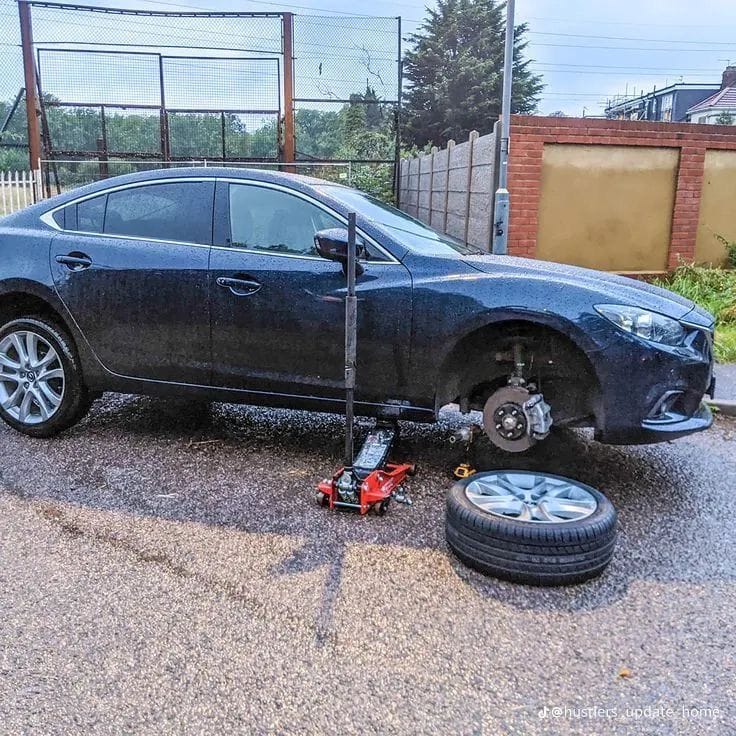How Often Should I Change My Car Tyres? A Complete Guide

Introduction
How often should I change my car tyres? Knowing when to replace tyres is essential for vehicle safety and performance. While many drivers focus only on tread depth, several factors determine optimal replacement timing. This guide examines all key considerations to help you make informed decisions about your car’s tyres.
Key Takeaways
Most tyres need replacement every 5-6 years regardless of tread depth
The legal minimum tread depth is 1.6mm, but 3mm is safer for wet conditions
Check tyres monthly for wear patterns, cracks, or bulges
Driving style, road conditions and climate significantly affect tyre lifespan
Regular wheel alignment and rotation extends tyre life
For professional advice on when to replace tyres, consult a specialist
1. Tyre Age: When Old Becomes Unsafe
Manufacturer Recommendations
Most tyre manufacturers recommend replacement after:
5-6 years for normal use
3-4 years for high-performance vehicles
10 years maximum regardless of condition
How to Check Tyre Age
Locate the DOT code on the sidewall:
Last four digits show week/year of manufacture
Example: “2523” means 25th week of 2023
2. Tread Depth: The Visible Wear Indicator
Legal Requirements Across Regions
Country | Minimum Tread Depth
UK/EU | 1.6mm
USA | 2/32 inches (1.6mm)
Australia | 1.5mm
Why Replace Before the Legal Limit
Wet braking distance increases dramatically below 3mm
Risk of aquaplaning rises significantly
Some insurers may void coverage for bald tyres
3. Factors That Accelerate Tyre Wear
Driving Habits
Aggressive acceleration/braking: +40% wear rate
High-speed cornering: uneven shoulder wear
Frequent short trips: prevents even heat distribution
Road Conditions
Potholes: cause internal damage
Gravel roads: increase tread abrasion
Urban driving: more stop-start wear
Climate Impact
Hot weather: accelerates rubber degradation
Cold weather: makes rubber brittle
Coastal areas: salt speeds up corrosion
4. Visual Inspection: Spotting Problems Early
Uneven Wear Patterns
Center wear: Overinflation
Edge wear: Underinflation
One-side wear: Alignment issues
Structural Damage
Sidewall cracks (weather checking)
Bulges or blisters (impact damage)
Visible cords or belts (extreme wear)
5. Maintenance Practices to Extend Tyre Life
Optimal Inflation Pressure
Check monthly when tyres are cold
Follow vehicle manufacturer’s recommendation
Adjust for heavy loads or high speeds
Regular Rotation Schedule
Front-to-rear every 5,000-8,000 miles
Follow vehicle-specific patterns
Include spare tyre in rotation
Wheel Alignment Checks
After hitting curbs/potholes
When installing new tyres
If vehicle pulls to one side
6. Special Considerations for Different Vehicles
Performance Cars
Softer compounds wear faster
Wider tyres more prone to uneven wear
Lower profiles more vulnerable to damage
SUVs and 4x4s
Heavy weight increases wear
Off-road use requires more frequent checks
Different wear rates between axles
Electric Vehicles
Instant torque increases wear
Heavier battery weight affects lifespan
Specific low-rolling-resistance tyres often used
FAQs: Tyre Replacement Questions Answered
How many miles do tyres typically last?
Budget tyres: 15,000-20,000 miles
Mid-range: 20,000-40,000 miles
Premium: 40,000-60,000 miles
Can I replace just one tyre?
It’s best to replace tyres in pairs (same axle) unless the others are nearly new. Mismatched tyres can affect handling.
Do winter tyres wear faster?
Yes, softer compounds in winter tyres typically wear 20-30% faster than all-season tyres in warm conditions.
How can I make tyres last longer?
Maintain proper inflation
Rotate regularly
Avoid aggressive driving
Keep wheels aligned
Store properly when not in use
Conclusion: When to Take Action
Regular inspections are key to determining when to replace tyres. While tread depth provides the most obvious indicator, age and condition are equally important. For professional assessment and quality replacements, visit Tyrevortex where experts can evaluate your specific needs and recommend the best solutions for your vehicle and driving habits.
Remember: Your safety depends on four small contact patches – never compromise on tyre quality or condition. Schedule regular checks and replace tyres proactively rather than waiting for problems to develop.